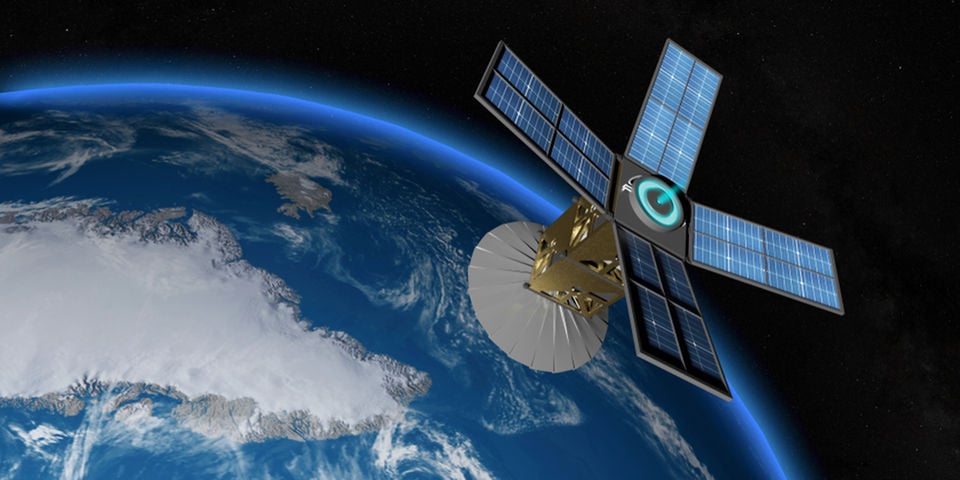Taifa-1: Kenya’s leap into space exploration and utilization for food security and beyond

The successful deployment of the Taifa-1 satellite into orbit will signify Kenya’s most significant stride into the realms of space exploration and utilization. It will be a testament to Kenya’s growing capabilities in the space industry and its commitment to leveraging space-based technologies for the benefit of its people and the advancement of scientific research.
Engineered entirely by Kenyan professionals, Taifa-1 represents Kenya’s maiden operational satellite for earth observation. It was scheduled to be launched on the Falcon 9, SpaceX rocket from Vandenberg Space Force Base in California, on 14th April 2023 but has once again been rescheduled due to bad weather.
On 12th December 1970, the first satellite specifically designed for X-ray astronomy, Small Astronomical Satellite 1 (SAS-1), was launched from the San Marco Platform in Malindi (now known as the Luigi Broglio-Malindi Space Centre). This National Aeronautics and Space Administration (NASA) satellite was christened “Uhuru” to commemorate the seventh anniversary of Kenya’s independence and in recognition of the hospitality of the Kenyan people. Uhuru was a scanning mission that performed the first comprehensive survey of the entire sky for X-ray sources and ended in March 1973.
Kenya’s first satellite named 1st Kenya University Nano Satellite – Precursor Flight (1KUNS-PF) was deployed into orbit from the International Space Agency on 11th May 2018. It was developed by a team of engineers and researchers from the University of Nairobi, in collaboration with the Italian Space Agency (ASI) and the Japanese Space Agency (JAXA). The primary goal of 1KUNS-PF is to serve as a precursor mission, laying the foundation for future satellite projects in Kenya. It aims to provide valuable data and insights in areas such as weather forecasting, disaster management, and environmental monitoring.
Taifa-1 is an Earth Observational satellite. This is a type of satellite that is specifically designed to observe and monitor the Earth from space. These kinds of satellites are equipped with various sensors and instruments that capture data about the Earth’s surface, atmosphere, oceans, and other geospatial features. The data collected by Earth Observational satellites is used for a wide range of applications, including environmental monitoring, weather forecasting, disaster management, agriculture, urban planning, mapping, and scientific research.
Taifa-1’s orbit around the Earth is expected to complete 16 rotations in a single day, with a chance of passing over Kenya during its journey. The primary purpose of the satellite is to capture images of the Kenyan landscape as it enters the country’s territory. Once the images are taken by the onboard camera, the computing subsystem within the satellite will instruct the camera to transfer the images to the radio modules. These radio modules will then transmit the images through a radio link to the ground station.
The establishment of a ground receiver station is currently at an advanced stage and is slated to be completed by June 2023. The station will be located at a governmental site in Kasarani and will serve as the receiving point for the images transmitted by the satellite.
In a statement dated 3rd April 2023, Hillary Kipkosgey, the director of Kenya Space Agency, highlighted that the mission of Taifa-1 satellite is specifically designed to provide accurate and timely data to stakeholders in various fields, including agriculture and food security. The Kenya Space Agency, established and mandated under the Kenya Space Agency Order of 2017, plays a key role in coordinating, regulating, and promoting the advancement of the space sector. It provides leadership and advisory services in policy, legislation, and programs related to the space industry, and fosters, coordinates, and regulates activities in space to enhance the utilization of space technology for socio-economic development. Since its establishment, the activities of the Kenya Space Agency have been guided by the Kenya Space Policy 2015, Kenya Space Strategy 2015 and Kenya Space Agency Order 2017.
With the launch of Taifa-1, Kenya is poised to benefit greatly, particularly in addressing its food security challenges. Space-based technology will play a pivotal role in supporting food security and nutrition efforts by providing invaluable data to key stakeholders such as farmers, agronomists, food manufacturers, and agricultural policymakers. Through spatial data, space-based technology will enable real-time monitoring of critical factors such as soil conditions, floods, droughts, pests, diseases, crop development, and livestock management, while also delivering early warning signals.
Satellites, including Taifa-1, will serve as agricultural observatories and weather assessment tools, furnishing vital information on rainfall and temperature that will inform crucial farming decisions, such as planting and harvesting schedules. Moreover, space applications will facilitate soil quality mapping and precision agriculture, leading to enhanced farm management practices and increased productivity in the agricultural sector. As Kenya leverages space-based technology, Taifa-1’s capabilities are poised to contribute significantly to addressing food security and nutrition challenges in the country.

